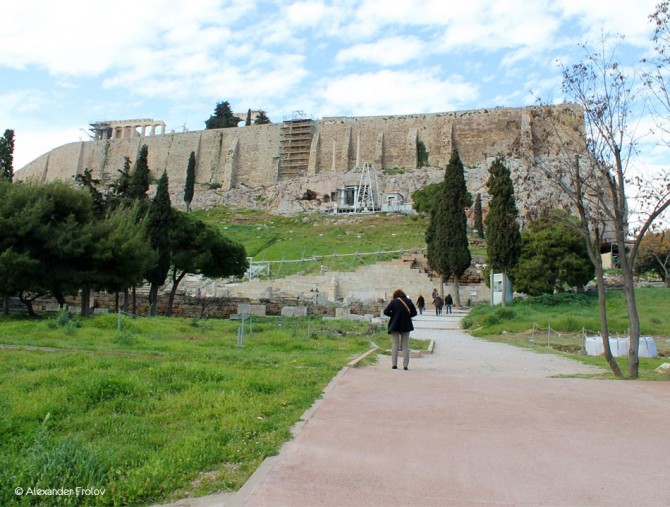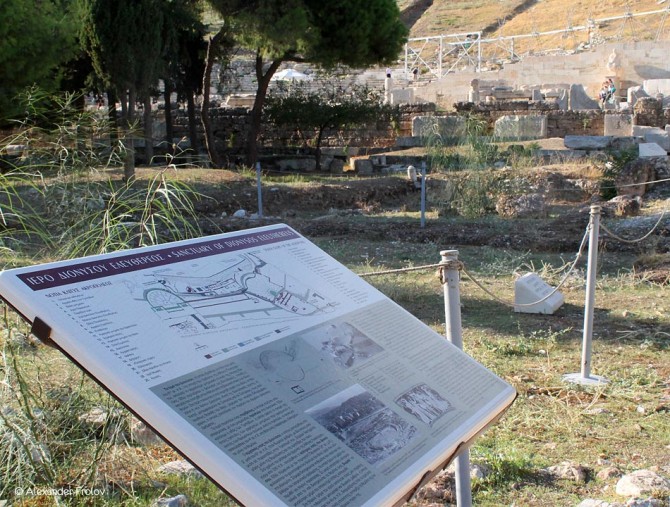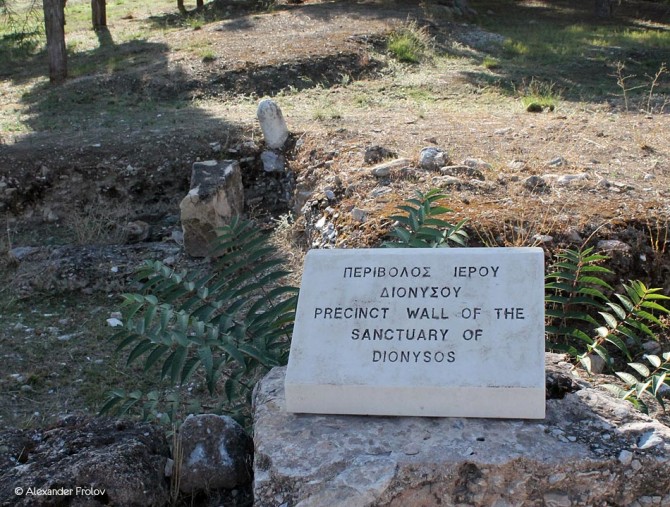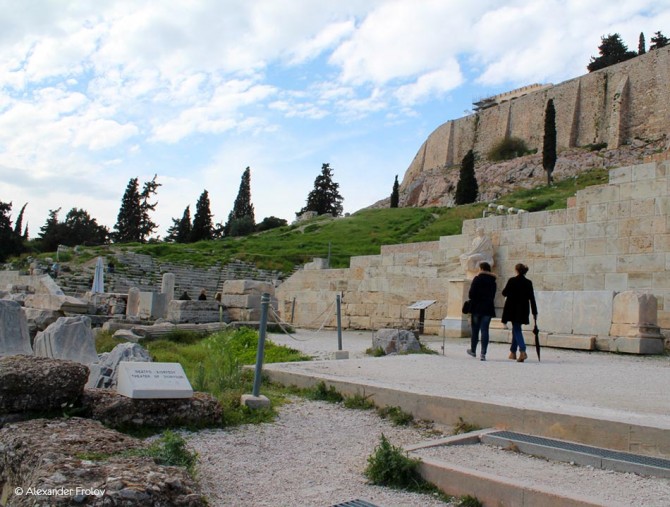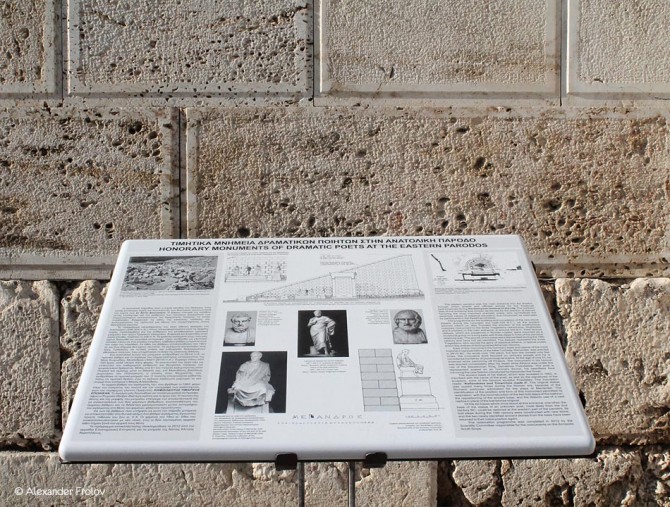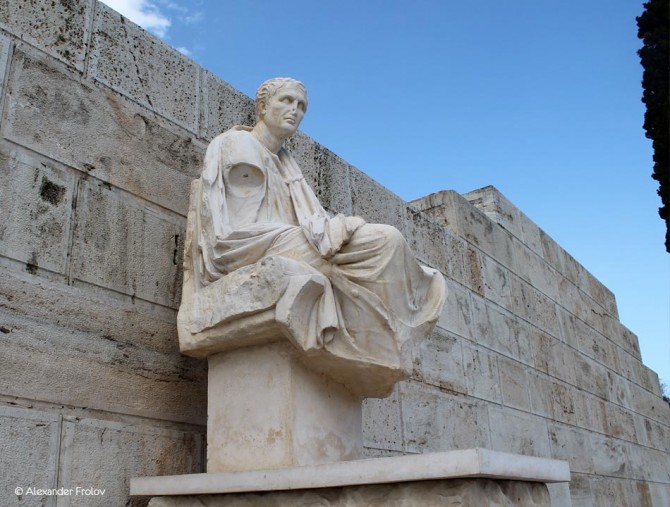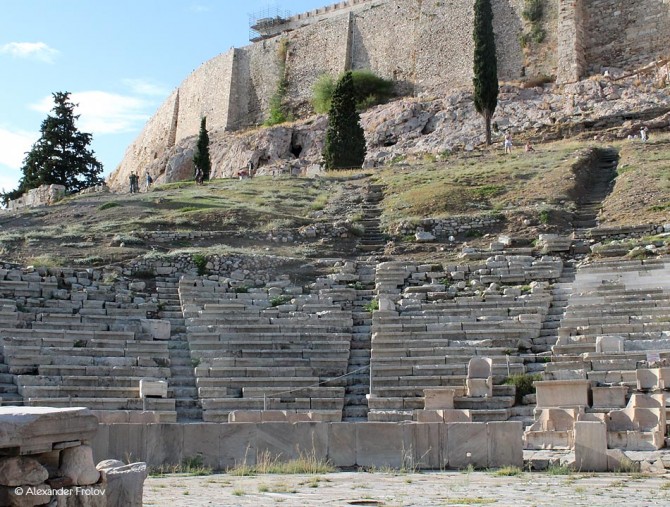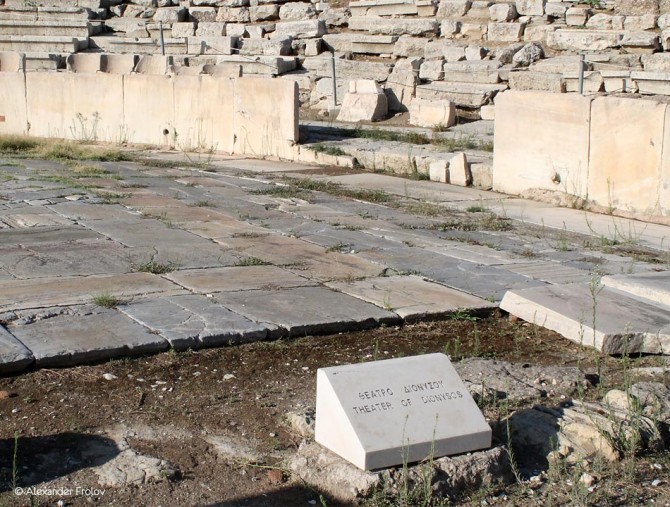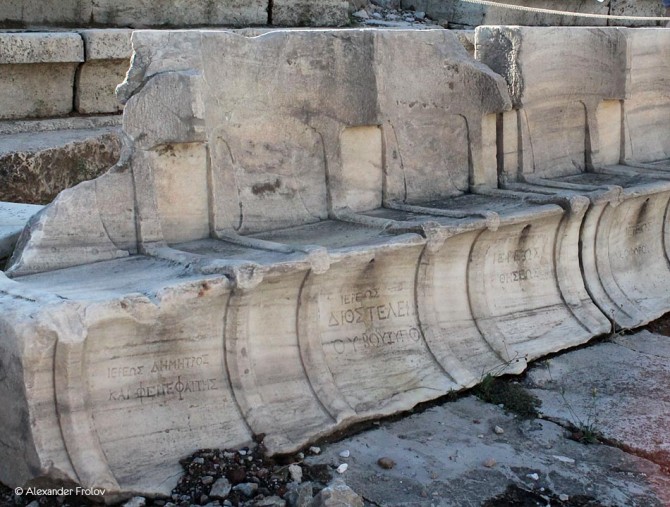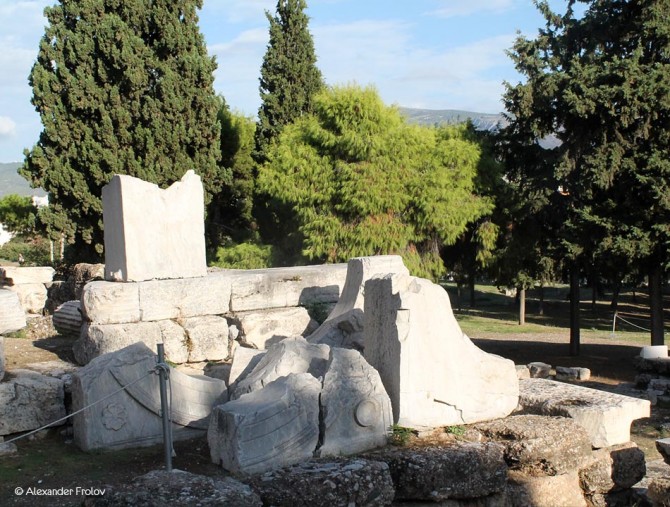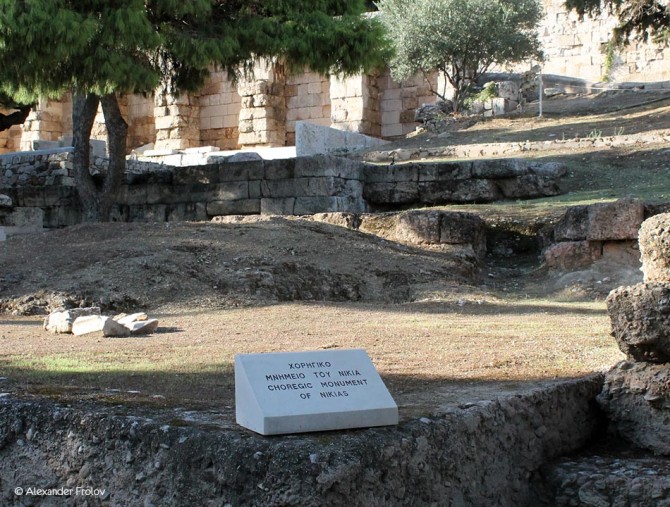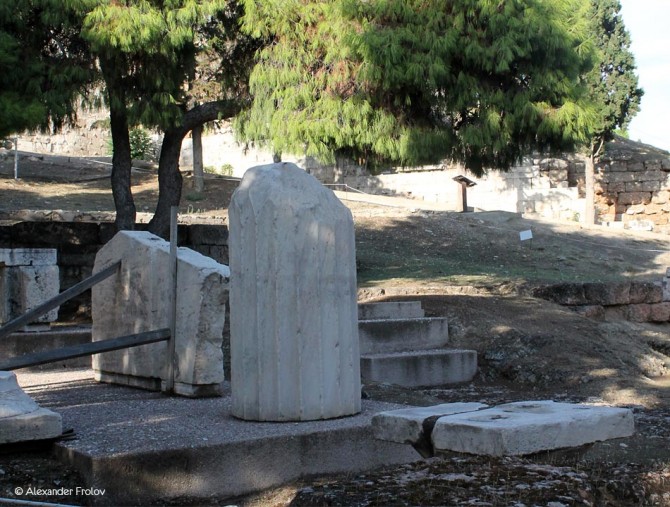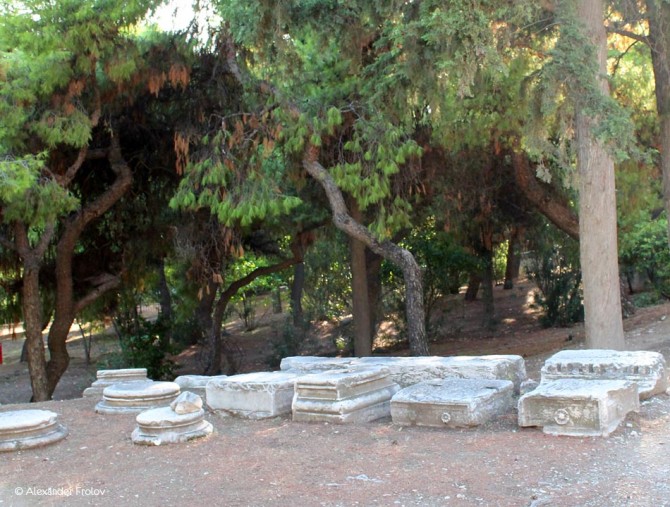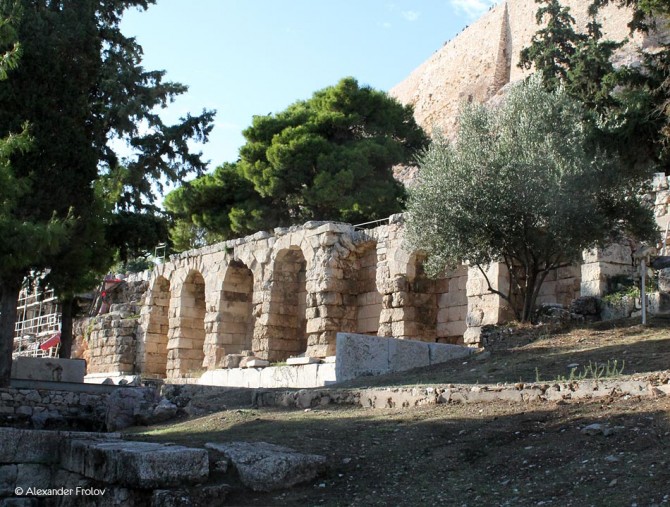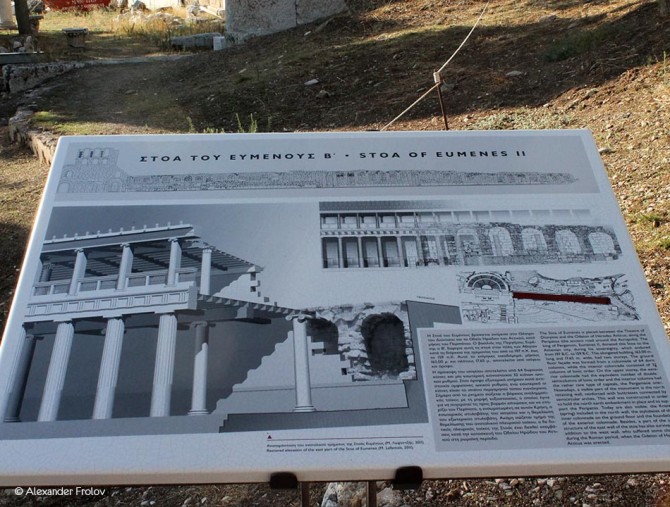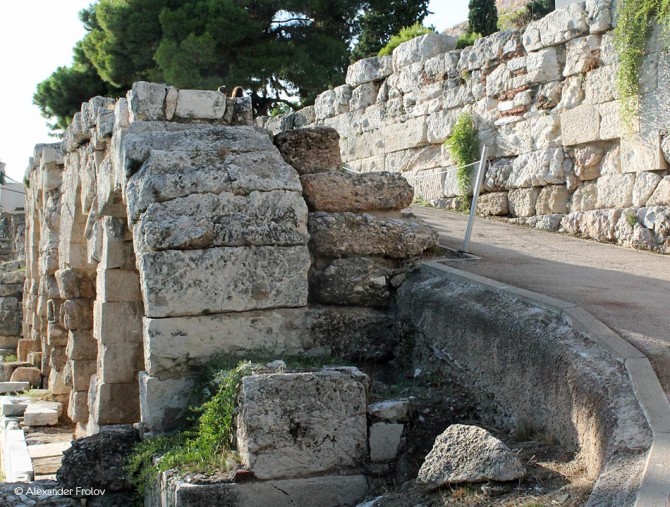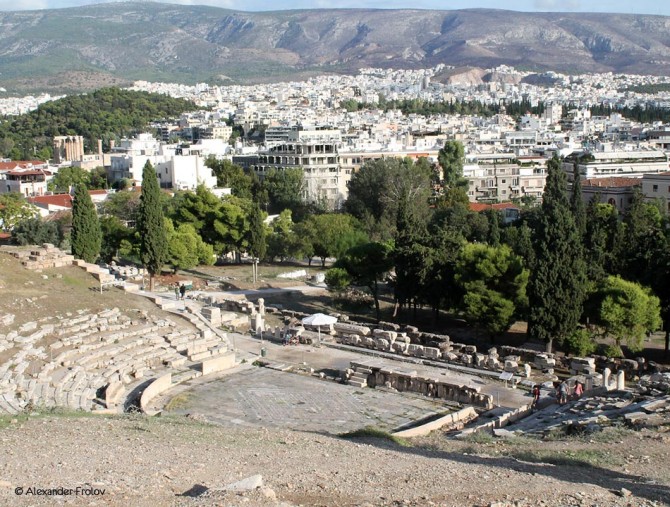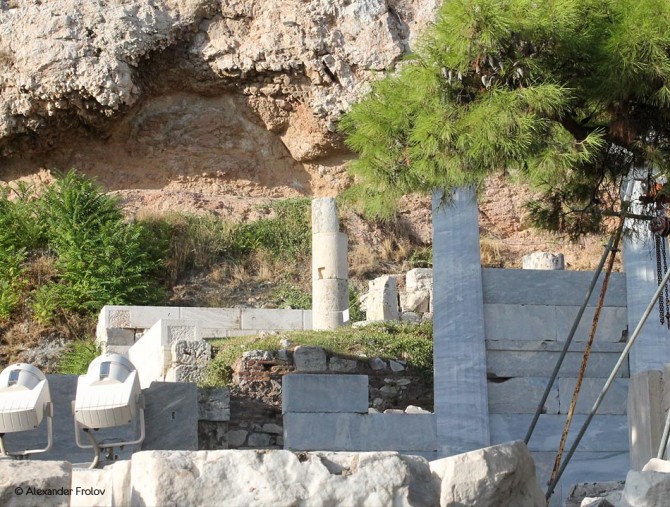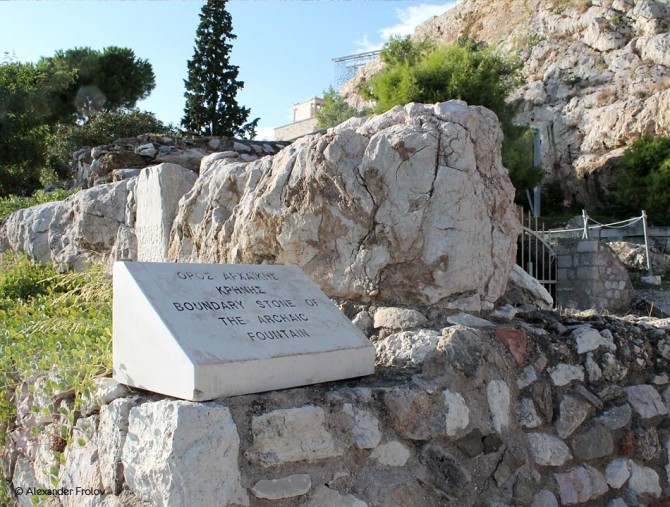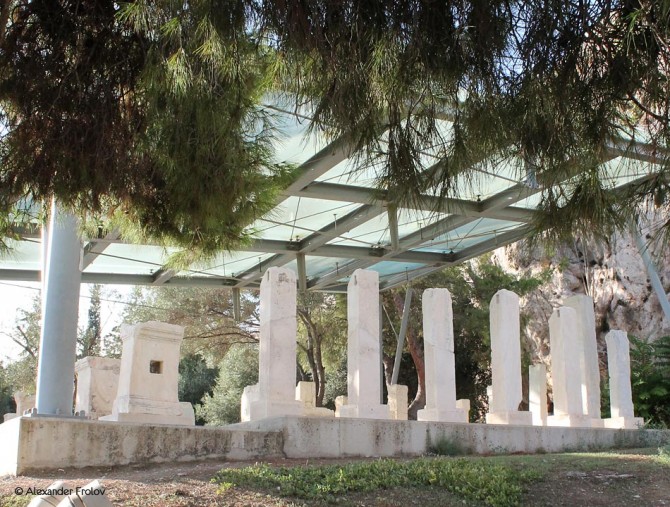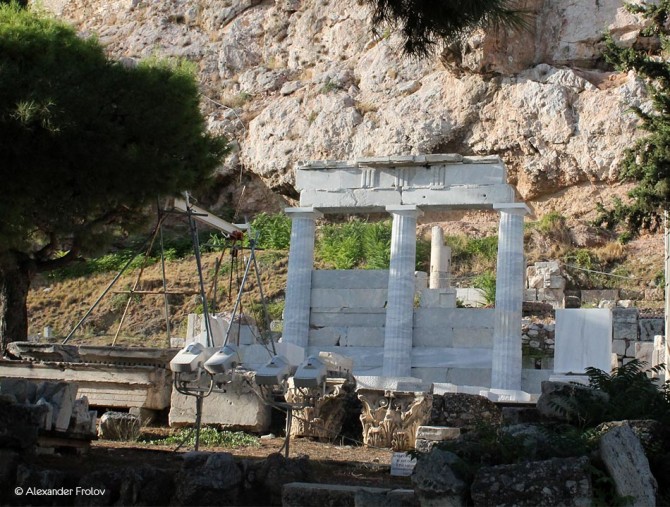Южный склон Акрополя
Кроме Театра Диониса наиболее хорошо сохранившиеся остатки принадлежат Стое Эвмена – грандиозной эллинистической постройке (197-159 годы до н.э.), вытянувшейся вдоль всего южного склона Акрополя. Эта двухэтажная галерея была воздвигнута по заказу пергамского царя Эвмена II, пожелавшего прославить себя в таком престижном городе, как Афины. Стоя Эвмена выглядела идентичной Стое Аттала, которая была полностью воссоздана в XX веке. Стою Эвмена нередко использовали как склад для театральных принадлежностей, а также здесь в случае непогоды могли укрыться зрители.
К западу от дороги, ведущей из святилища Диониса до Акрополя находится величественный, так называемый спонсорский, памятник Ники. Институт спонсорства в Афинах ведет свое начало с VI века до н.э.. Авторами были состоятельные афиняне, которые брали на себя расходы на подготовку спектакля, и таким образом всегда могли присутствовать на театральных представлениях или соревнованиях. Монумент Ники имеет форму дорического храма с шестью колоннами на фасаде и фронтонами по обеим узким сторон. Он был построен за 160 лет до Стои Эвмена.
Вход к южному склону Акрополя находится на пешеходной улице Дионисия Ареопагита и Апостола Павла. Многие памятники, находящиеся на южном и западном склонах Акрополя довольно неплохо видны с этой улицы - прекрасного археологического променада. Там же располежен Одеон Герода Аттика - крупнейшая концертная площадка на которой даются представления и по сей день.
Как добраться до Южного склона Акрополя:
- на метро, станции Акрополи и Тиссио
Часы посещения: 8:00-20:00, цена билета 2 евро. Также доступен вход при предьявлении билета за 12 евро, дающего право посещения Акрополя и всех важнейших археологических сайтов Афин.
Фото и текст: Александр Фролов
The South Slope of the Acropolis
Under the sacred rock of the Acropolis, on the south slope, a number of important monuments and sanctuaries lie. Due to the topography and the abundance of drinking water of this area, the South Slope of Acropolis was considered as ideal place for the erection of important Athenian buildings in the Archaic times and many centuries later.
The most ancient findings of the area are dated back to the Neolithic Period (4th Millennium BC), however, the first archaic monuments built in the South Slope of Acropolis were the archaic fountain at the site where the Asclepeion was built later, and the archaic temple of the sanctuary of Dionysus (both built in the second half of the 6th century BC). Around the same time, they had formed a circular area to the north of the temple which would later be the notorious Theater of Dionysus.
A visit to the archaeological site of the South Slope of Acropolis will travel you back in the times where these ancient stones and columns were parts of magnificent temples and buildings, where the Athenians gathered to worship, be healed and be entertained.
Entering to the archaeological site from the main entrance (Thrasyllou Street and pedestrian of Dionysiou Areopagitou) the first monument you will see is the sanctuary of Dionysus Eleythereos, located at the east side of the South Slope of Acropolis. The sanctuary was founded in the second half of the 6th century BC and is consisted of two temples of Dionysus, an altar, a Stoa and parts of the wall that enclosed the monument.
At the north of the Sanctuary of Dionysus, there is the famous Theater of Dionysus, which was initially built in order to host the worshiping ceremonies in the honor of the god, and later was turned into one of the most important outdoor theaters of Athens, where the greatest dramatists “taught” their tragedies.
At the west of the Theater, there is the most important sanctuary of the South Slope of the Acropolis, the wonderful Asclepeion, where the Athenians were going to be healed. It was founded in 420/19 BC.
Very close to the southeast corner of the enclosure of the Sanctuary of Dionysus there are the ruins of the church of Agia Paraskevi, a single-aisled basilica with a floor made by parts of ancient buildings. It was probably built before 1687.
In the area between the Sanctuary of Dionysus and the Odeon of Herodes Atticus, you will see the Stoa of Eumenes, built in 160 BC, as a gift of the king of Pergamon, Eumenes B’, to the Athenians. This two storey building was probably used as the warehouse for the scenes of the Theater of Dionysus or as a shelter for the spectators when the weather was bad.
To the west of the road that leads from the sanctuary of Dionysus to the Acropolis there is the majestic sponsorship monument of Nicias. The institution of sponsorship, to begin with, was established in the late 6th century in Athens. The sponsors were wealthy Athenians who undertook the cost of preparation of the play that would attend the dithyrambic or dramatic competitions. The monument of Nicias has the shape of a Doric temple with six columns on the facade and gables on both narrow sides. It was built 160 years before the Stoa of Eumenes.
The last monument of the South Slope of Acropolis is the Sponsoring Monument of Thrasyllus, which is in the midst of the sharply carved rock above the Theater of Dionysus. This amazing monument, that had been kept almost intact for twenty centuries, was destroyed in 1827, during the siege of Acropolis by the Turks.
South Slope of Acropolis, Acropolis, main entrance on the Thrasyllou and Dionysiou Areopagitou street, Athens, metro station Acropolis. Visiting hours: Daily, 8:00-20:00. Last entrance: 19:30. Ticket prices: Full: 2 euros, Reduced: 1 euro. Special ticket package: Full: 12 euros, Reduced: 6 euros. Valid for: Acropolis of Athens, Ancient Agora of Athens - Areopagus, Archaeological Museum of Kerameikos, Hadrian’s Library, North Slope of Acropolis, Kerameikos, Museum of the Ancient Agora of Athens, South Slope of Acropolis, Olympieion, Roman Agora of Athens.
Τext: Marilou Pantazi

